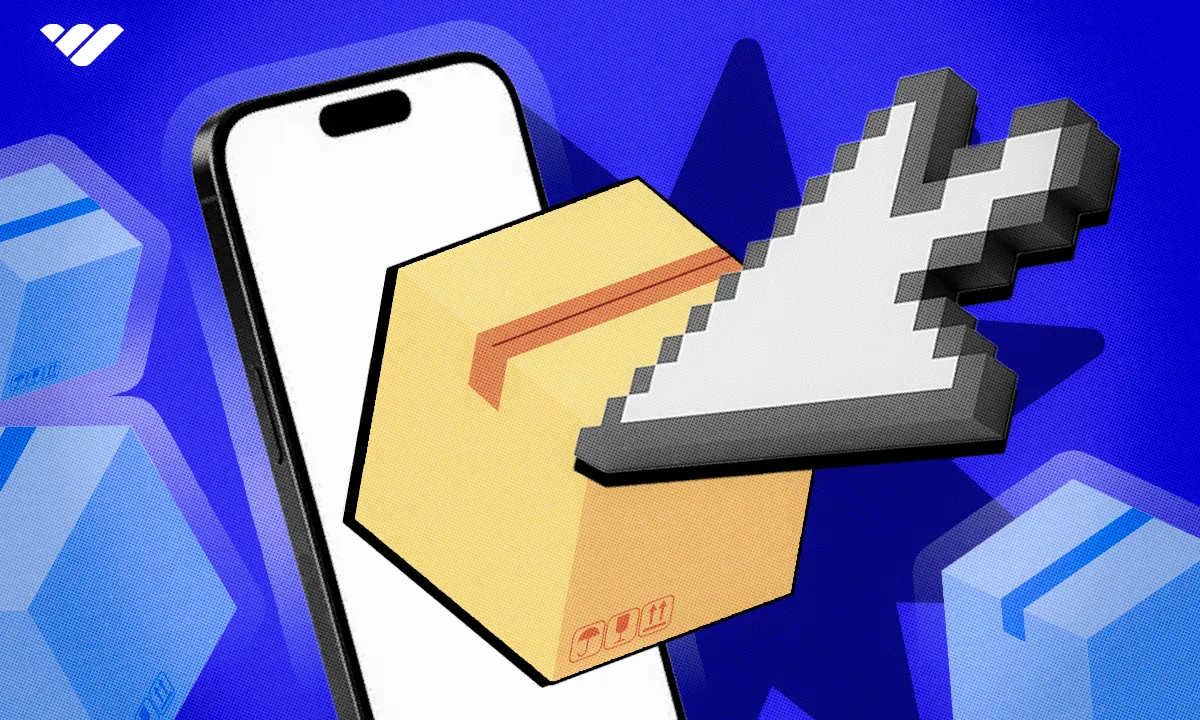Learn how dropshipping niches work, including how to predict future profitable trends before the competition. Plus, we share the best dropshipping niches, along with those to avoid.
Key takeaways
- Targeting a specific niche lets you build authority, command higher prices, and differentiate from generic dropshipping stores.
- Use social media trends, keyword research, and customer perspective analysis to discover profitable niches before competitors do.
- Maximize profitability by selling replenishable items and complementary products that increase customer lifetime value.
Dropshipping is one of the hottest opportunities in ecommerce today, especially for first-time entrepreneurs looking for a business model that can be started with minimal costs and high profit potential. However, finding success as a dropshipper requires much more than just setting up a store and listing products at random.
Since the barrier to entry is low, dropshipping is highly competitive, so one of the biggest contributing factors to your store’s viability and profit potential is the niche you choose. A well-chosen dropshipping niche will allow you to understand and speak to a specific audience.
Whether you’re just starting your dropshipping journey or you’ve already embarked and haven’t yet cracked the code to consistent income, you’re in the right place.
It's time to level up your skills to understand how dropshipping niches work, including how to predict future profitable trends before the competition.
Is dropshipping still profitable?
Despite conflicting public opinions from both the general public and some social media influencers, dropshipping is absolutely still profitable in recent times and will continue to be in the future. However, it’s important to understand that in order to become a profitable dropshipper today, you’ll need to have a strong foundational knowledge base that will give you a future-proof edge against competition, namely in the following areas:
Product sourcing
Finding the right product is just one piece of the puzzle of getting it in your dropshipping store and ready for customers, you’ll need to effectively source it from the right supplier. Sourcing your product from a good supplier is equally important to picking the right product, so it’s good to take time to learn best practices in this realm.
Marketing strategy
The most profitable dropshippers don’t necessarily have the best products or even superior suppliers. While it’s still important to have good products and suppliers, an effective marketing strategy that gets your store in front of the right customers is what separates seven-figure dropshippers from those who are barely getting by. Top-level dropshipping stores often use a combination of both paid and organic marketing to get their store out there.
Niche selection
One of the most important factors in creating and maintaining profitability as a dropshipper is choosing the right niche. While it’s true that some markets have become saturated or should be avoided in general, there are still several niches in dropshipping that are good to pursue even if you’re starting completely from scratch today.
What is a dropshipping niche?
A dropshipping niche is a segment of the market that includes an overall theme and a variety of related products. A niche is broader than a specific winning product, but it’s more specific than a general category. More than a category of products, a dropshipping product is a defined area of specialization that will allow you to speak to a specific audience in a way that is more relatable with the potential to create and foster a loyal relationship that can grow your brand into a memorable, go-to store with lasting potential.
What are the advantages of targeting a good dropshipping niche?
Picking a good dropshipping niche will give you a huge advantage. Here are some of the benefits you’ll reap if you do this correctly:
Become an authority
The first thing you need to do when choosing your niche is to develop a certain level of expertise so you can put out content and become a topical authority. If you have an existing interest that fits with a good dropshipping niche, you have everything it takes to become an authority. Start by consistently putting out content surrounding the topic and craft your online presence so that it’s clear that you’re someone familiar with the niche. For example, if you are a long-time dog owner you might decide to open up a dropshipping store in the dog toy niche.
Build rapport and loyalty
When you focus on a specific niche, you’ll be able to speak directly to your target audience’s needs and pain points. This targeted approach will allow you to create branding and a store that more deeply resonates with your target audience, increasing the chances of building a loyal audience. Continuing with the dog toy store example, you could showcase your dog in the organic marketing, product photos, and about section of your website.
Differentiate from generic dropshipping stores
In the sea of general dropshipping stores selling basically anything or those dedicated to selling just one gimmicky product, any store that is tailored towards a niche will stand out. This means creating product names and descriptions in a way that a niche expert would. For example, instead of using the same product name and description as AliExpress, you should modify these to be more appealing.
Can command higher prices
After you’ve laid the groundwork to position yourself as a specialist in your niche and a topical authority, you can ask for higher prices than generic dropshipping stores. Ironically, higher prices can increase conversion rates in many niches as the product will look more expensive as long as you use a premium-looking store design and well-written product descriptions to help justify the price.
How to find the right dropshipping niche

Now that we’ve gone over what a dropshipping niche is and what benefits you’ll reap by targeting one and building a store around it the right way, let’s go over how exactly you can find the dropshipping niche that’s best for you:
Put yourself in the shoes of a customer
One of the most effective ways to identify a potential dropshipping niche is to think as if you’re a potential target customer. What problems are they facing, and which products will help address these problems and make life in that area easier or more enjoyable?
It’s easiest to pick a niche that you’re a customer of yourself so you can know exactly what will trigger someone to choose a store and its products. Think of one of your go-to shops for a specific area of your life. It could be anything from outdoor gear, coffee, fashion, or tech gadgets. Take note of the way the brand reached you and resonated with you with their marketing, and pick a niche you feel you can replicate a similar journey to win over customers.
Analyze social media trends
Social media has changed the way people discover products and shop, and the success of TikTok Shop has especially proven that these platforms and shopping go hand-in-hand. TikTok, Instagram, YouTube, and even Facebook – particularly in niche Facebook groups – can be absolute goldmines for finding winning dropshipping niches.
Pay special attention to viral products that are advertised as must-have items by UGC creators and follow the funnel that leads you to the store, all the way to the checkout process. Beyond looking at exact products, look for an overarching theme or vibe to give you an idea of what niche you should target and how you should brand yourself as the best do.
Undertake keyword research
Keyword research can be especially helpful for finding niches as the data surrounding what words and phrases people are searching can give you valuable insight into which areas have high potential for your dropshipping store.
Free tools like Google Trends or Google Keyword Planner will provide data surrounding search volume and how terms and niches have been trending historically. If you want more precise insights on competition and more, you can use paid tools like SEMRush or Ahrefs.
Look for unusual products
Consumers are constantly being stimulated by novelty while scrolling their phones, so to stop them, you need to catch their eye. Look for products that are somewhat unusual or have a unique take on an otherwise normal idea. This will help you understand what winning products and niches can help make for a profitable dropshipping store.
Examples of such products and their respective niches include funny dog costumes and an interactive light-up ball for cats in the pet niche or a portable, easy-to-clean juicer and an avocado slicer in the kitchen niche.
Consider replenishable items
If you want to reap the benefits of monthly recurring revenue, you can achieve that in the dropshipping world by selling items that need to be replenished regularly. By selling these types of items, you’ll be able to get a higher average lifetime customer value in addition to having the potential for a loyal customer base.
Positioning yourself as an authoritative brand in your niche will give you greater potential for fostering customer loyalty. Make sure to incentivize repeat customers with coupons and deals on new products so that you can increase revenue over time and maximize the longevity of your business.
Find low-cost high-profit items
One of the basic principles in business and ecommerce is to find items at a low cost that can be sold for a high profit, and this is especially important in dropshipping. With many people targeting similar items and operating on slim margins, aim to stand out and position yourself as a premium offering so you can charge higher prices.
A good rule of thumb would be to aim for a product that gives you at least a 40% profit margin after accounting for all costs. Simple products that are branded well can easily generate this level of profit or even higher–a good example is a gua sha tool or face roller that can be sourced for less than a dollar and sold for many multiples more than that.
Target niches with complementary products
One of the biggest advantages to strategically targeting a dropshipping niche is that you can sell complementary products, something you should definitely take advantage of if you want to grow to the level that top dropshippers operate on.
For example, if you’re running an environmentally-friendly dropshipping store, an eco-friendly water bottle can be complemented with reusable straws, bottle cleaning brushes, and insulated sleeves.
Now that you have good foundational knowledge surrounding dropshipping niches, you can make an informed decision about which one might suit you best based on your interests and skills. To give you an exact list to choose from, here’s a list of 10 of the most promising dropshipping niches along with 5 that you should steer clear of:
Top 10 best dropshipping niches

1. Unique bedroom accessories
A longstanding goldmine for dropshippers who are in the know, unique bedroom accessories remains one of the best niches to choose for your store, even if you’re just starting out.
The best products in the bedroom accessory niche combine novelty with functionality, making for perfect marketing with organic social media efforts.
Examples of exact products in this niche that have become especially popular from social media include the astronaut ceiling light projector and the mini phone-compatible projector.
2. Innovative pet accessories and toys
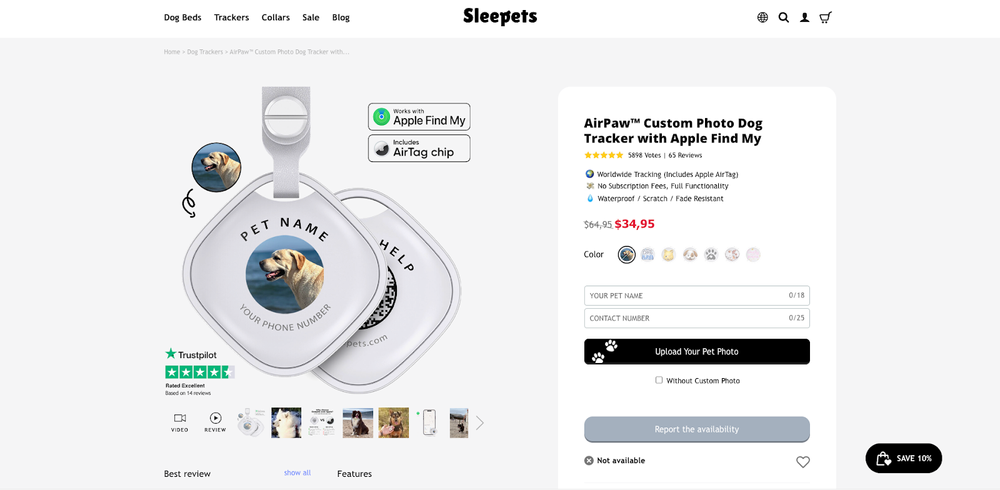
The pet industry is still one of the largest consumer segments packed with loyal pet owners who are increasingly willing to splurge on their furry friends.
Look for innovative pet products that will do well in videos you can make of a pet interacting with the product, making it appear fun and appealing.
Moving cat or dog toys, flowing water fountains, and replenishing feeders are all examples of dropshipping products that do well within this niche.
3. Portable tech gadgets
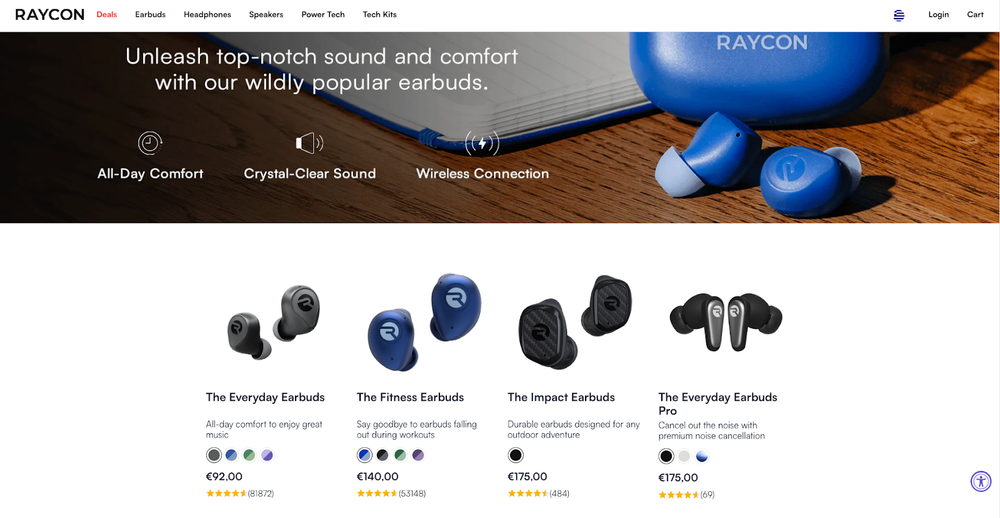
Technology has seen a progressive reduction in size over the years, and this keeps spreading further to cover more areas of previously bulky consumer goods, making portable tech gadgets a great niche to target as a dropshipper.
The benefit of dropshipping in this niche is that many of these gadgets can have a high perceived value while remaining relatively inexpensive to source, allowing for healthy profit margins. Mini projectors fall in this category in addition to high-storage power banks, mini cameras, and even mini fans.
4. Eco-friendly everyday items
More people are looking to shift to environmentally friendly consumerism in more areas of their lives, so it’s a perfect niche to position yourself as a solution as a dropshipping store.
Focus on your branding and mission-driven marketing, providing educational content in addition to photos and videos showcasing your products, focusing on their durability, usefulness, and reusable nature. Reusable silicone food storage bags, bamboo-based plastic substitutes, and solar products can all do well within this niche with the right marketing.
5. Unique wallets and card holders
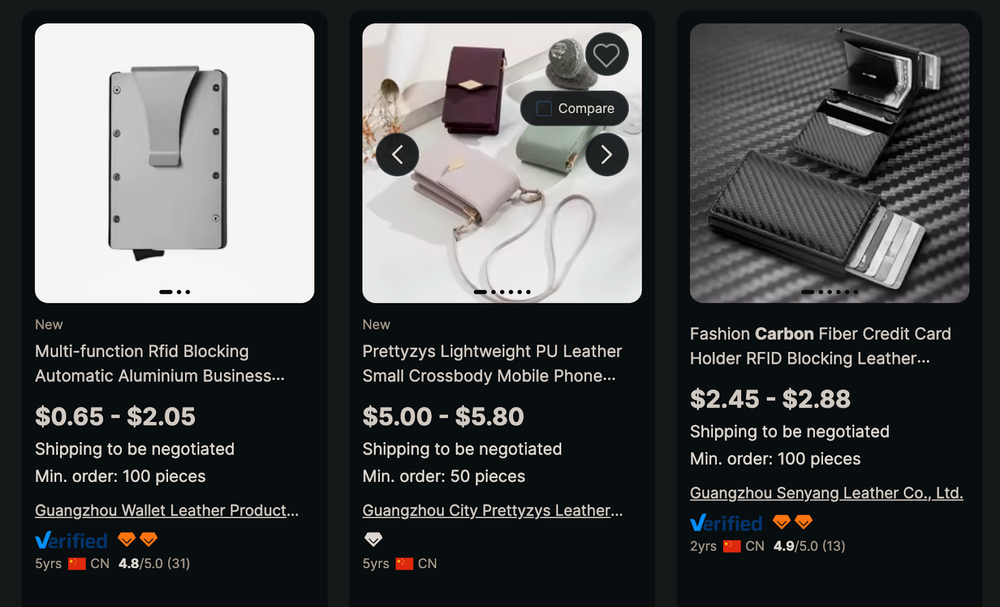
The wallet niche might appear to be saturated at first glance, but with such a large potential consumer base, you can reach customers with the right marketing and an eye-catching, useful design. Functional RFID-blocking wallets with a slim and appealing design can do well, especially if you market yourself as a higher-end solution. Educate your consumers on the security issues with a non-RFID-blocking wallet while showcasing your product’s visual appeal and durability for the best results.
6. Work-from-home accessories
With more people working from home and the rise of digital nomadism, the demand for work-from-home accessories has skyrocketed. This movement has caused a rise in the work-from-home accessory niche, particularly with practical and ergonomic items.
Speak to the customer in your marketing, emphasizing the product’s ability to enhance productivity, comfort, and convenience in various settings. Portable Bluetooth keyboards, wifi boosters, and ergonomic pads and accessories can all be sold together inside a single dropshipping store in this niche.
7. Craft and DIY supplies
Some people who picked up a new hobby of crafting and DIY during the pandemic have kept their practice strong throughout the years, and in addition to those looking to replenish their supplies, there’s a largely untapped market for those who are looking to get into these activities.
One thing that makes this niche particularly attractive is the strong community aspect, with crafters sharing projects on social media, providing plenty of opportunity for strong organic marketing of your products. Resin art kits, miniature dollhouse kits, crotchet supplies, and instructional booklets can all be sourced from select dropshipping suppliers and sold in your niche storefront.
8. At-home beauty devices
As more consumers are looking to save money and have the convenience of creating a spa experience at home, the market for at-home beauty devices continues to rise. This is another niche that has the potential for high-profit margins thanks to high perceived value and relatively low sourcing costs.
LED light therapy masks, hair removal devices, and pore cleansers can all be used to create unique content that can be used to highlight the convenience and potential results that your customers would get from buying them from your store.
9. Functional cooking gadgets
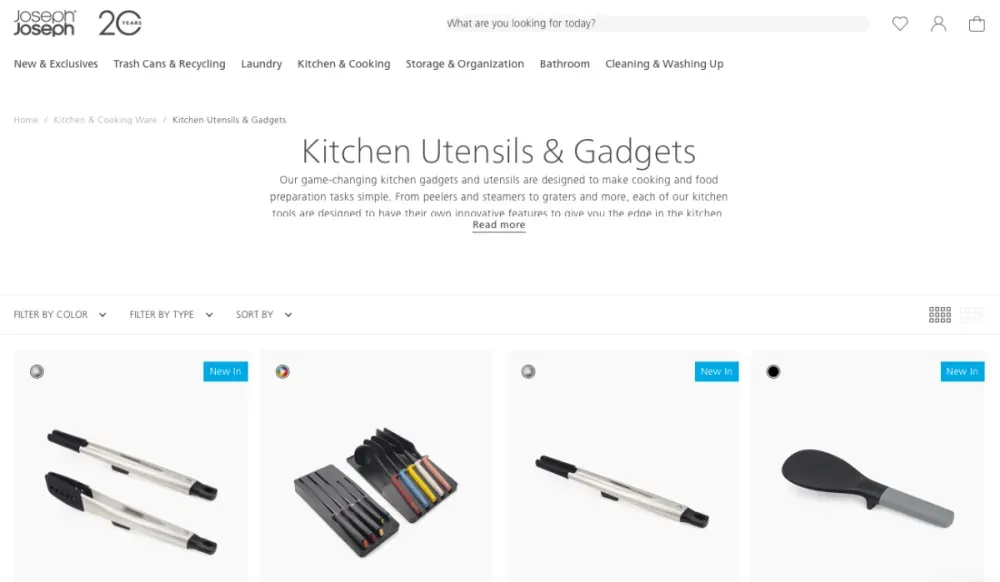
Innovative kitchen gadgets that make cooking tasks easy or add a touch of novelty and flair to the process are always in demand, making them a great dropshipping niche to target.
To win over customers amongst the competition, speak directly to your customer’s pain points, comparing what it’s like to live a cooking life without the product and how much more convenient it is with it. Specific products like avocado tools that combine cutting, pitting, and even storing them can be shown to be life changers for those who never thought to have them before.
10. High-ticket items
While many dropshippers focus on low-cost items, stepping into the realm of high-ticket dropshipping of pricier products is the secret sauce for some of the most profitable dropshipping stores.
High-ticket products encompass a wide range of product categories, but as a dropshipping niche, some products have the potential to do exceptionally well, such as DIY inflatable ice baths and high-end furniture from the right supplier. On the other hand, many high-ticket dropshipping products should be avoided – we’ll talk about those and more in the next section.
5 dropshipping niches to avoid
1. Fine jewelry
The fine jewelry market is built entirely on trust and reputation, and especially at the higher price points, it’ll be hard to establish significant levels as a solo ecommerce entrepreneur, and it’s virtually impossible to do as a dropshipper.
Most consumers of fine jewelry are looking for brand-name goods or reputable boutique items from a trustworthy source, so carrying out the standard dropshipping model of rebranding generic products doesn’t quite translate to the world of jewelry.
If you do want to enter the realm of fine jewelry or high-end watches, it’s more possible if you decide to become a reseller in this niche.
2. Generic clothing
While certain clothing opportunities within dropshipping such as unique print-on-demand or niche fashion such as festival wear can be good to enter as a dropshipper, generic clothing is far too saturated with intense competition that will make it hard to succeed as a dropshipper.
Additionally, platforms like Shein and Wish have become commonly known as sources for cheap generic clothing, and with more consumers being aware that they can buy the item directly from the source, this niche is becoming increasingly less viable.
Clothing is still one of the best niches to engage in as a reseller, particularly with vintage and streetwear.
3. Complex electronics
One of the biggest things that all store owners want to avoid is returns due to defects or confusion, and with dropshipping, this is especially the case as you’re at the mercy of your supplier for both fulfillment and quality control. All electronics should be approached with caution as a dropshipper, but complex electronics should be avoided altogether. Anything that includes potentially confusing setup instructions, complex components, or competing too closely with reputable name brands are all examples of electronics that won’t perform well in a dropshipping store.
4. Fragile items
Another category of products that should always be treated with caution is any item that’s fragile. This could include glassware or a lower-quality, flimsy plastic product. As a dropshipper, you’ll have to pay for the item even if it’s broken in transit, and since your supplier is shipping the item, there will be no way to fully ensure sufficient care in packing and handling.
Customers who have previous experience buying fragile products online only for them to arrive broken are also hesitant to make the purchase online, so this is one of the few categories of products that do better in person.
5. Highly regulated products
Some products like supplements and personal care can bring in strong revenue from a hungry customer base, but it might be best to avoid the temptation to sell in this niche if your plan is to dropship.
Supplements, certain cosmetics, and any product that makes a health claim will fall into the realm of regulation, and not only could this mean losing customer trust should your product not be up to par, but it could also mean potential legal trouble based on your local regulations. Rather than playing with fire by selling products that might have varying quality based on your supplier, you’re better off avoiding selling in this niche as a dropshipper.
Testing the viability of your niche
Once you’ve identified a potential niche, it’s crucial to test its viability first before fully diving in. Thankfully, the business model of dropshipping and its low startup cost compared to other traditional business models will allow you to test quickly so you can know right away whether you’re on the path to success without needing to invest much in both capital and time.
Here’s a proven process of how to effectively and efficiently test the viability of your niche as a dropshipper:
Order some test products
While dropshipping allows the convenience of never having to touch, see, or handle any of your products, this doesn’t mean that you should just put blind trust in your supplier and their claims. No matter how good their reviews and claims might seem, you won’t know their reliability without testing first-hand.
You’ll know what your customer’s experience will be if you go and order your product directly from the supplier. Make note of how long shipping takes versus how long they claimed it would be, and when the product arrives, analyze and nitpick everything from the way it was packed to whether or not any instructions or any necessary accompanying accessories were there or missing.
In addition to performing basic quality control and assurance, try out different models of a similar product from the same supplier and from different suppliers, ordering everything at once so you can make comparisons side-by-side. Not only will this experience make you choose the best product, but you’ll also be able to market your product accurately and efficiently with authentic messages that will be sure to resonate with your customers.
Check how competitive the market is
Next, you’ll need to test your product’s viability by checking how competitive the market is. One quick way to see this is by looking for the product on social media and seeing how many similar stores show up. If there are tons of stores with large followings and similar looks, you should either brainstorm how you can differentiate, or whether you should avoid this specific product altogether.
Another method of checking market competition is by looking up your intended product on Amazon, seeing if something similar or even the exact model is being sold on there. Check the product’s best-seller ranking and the number of reviews in addition to seeing how many competing sellers are selling the same thing to gauge the level of competition you’ll be up against as consumers are often browsing Amazon first when it comes to many of these products that are also sold within dropshipping storefronts.
Analyze profit potential
Even if you’ve picked a good product with established demand but not too much competition, you’ll need to run the numbers to ensure your business will be profitable. Look how much your competition is selling the product for to come up with a fair market markup and compare that to the cost of the product from your supplier to calculate your estimated profit margin. Remember to estimate on the conservative side, accounting for things such as potential returns and price changes, and also so that you can offer promotional coupons and remain profitable. Consider all costs of goods sold involved – even if you’re marketing organically, you might have to pay for assistance, and you should always leave room in your margins for advertising as this can be one of the greatest accelerants and creators of a six or seven-figure dropshipping business.
A good baseline profit margin to shoot for in dropshipping is at least 40%, and it should be much higher than that if your product is sold in the $10 range.
Create a test store and run limited ads
While this step is optional for those who are on a limited budget, taking the time to create a test store and run limited ads to it can quickly let you know whether or not a niche and your take on it has the potential for success.
Set up a basic store using an ecommerce platform such as Shopify or WooCommerce. Pick a few items that represent your chosen niche, giving customers options so you can test how appealing some products are compared to others.
From there, run a small-scale ad campaign on different social media platforms such as Facebook, Instagram, TikTok, and Snapchat. Set a relatively small budget –$100 is the minimum per platform to gather a decent sample size.
Analyze key metrics such as click-through rate and conversion rate, if there is any, to see how promising your product is should you up the ad budget and scale. If you conduct different ads with sufficient budget and reach and fail to get clicks or conversions, it’s time to revise your strategy or sell an entirely different product line altogether.
Assess long-term potential
Some dropshipping stores see massive numbers in a short timeframe only for those numbers to fall off a cliff as quickly as they appeared. To avoid your chances of being a short-lived, trend-chasing business, you should assess the long-term potential of your intended niche.
Key factors that will help you make an accurate assessment include asking whether the niche is a passing trend or if it’s pointing to a long-term shift in consumer behavior, and most importantly, if there’s an opportunity to expand and build a long-term brand around it.
The niches we listed in this guide are evergreen, that is, they’ve been around long enough that they’ve seen healthy ups and downs and don’t hinge on a single trending product.
Thinking long-term and approaching the world of dropshipping in terms of an overarching niche rather than a single winning product is the mindset shift that separates the short-term money chasers from those that go on to build thriving businesses, so remind yourself that longevity is more important than short-term profits and focus on building a solid foundation so you can achieve that.
Looking for dropshipping advice and education? Look no further than Whop
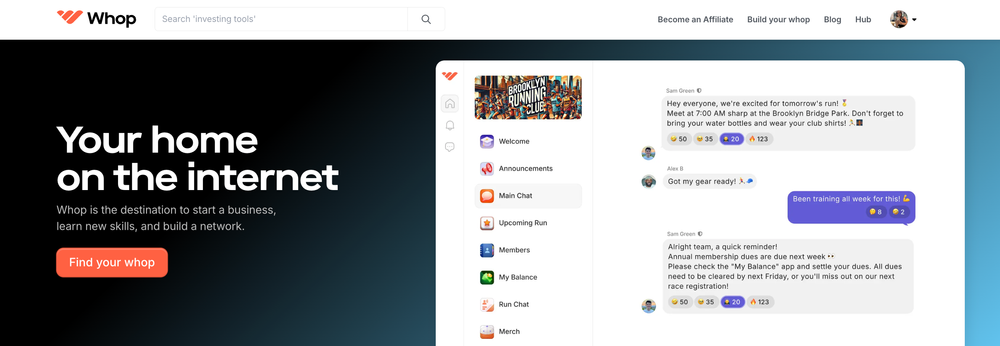
While this guide provides a solid foundation for starting or continuing your journey to success in dropshipping, this world is one of the fastest-changing niches of entrepreneurship, so it’s important to stay ahead of the curve.
Whop is home to a variety of solutions that will keep you on the pulse of the latest in dropshipping. You'll find courses, tools, and expert-led private communities that will give you the competitive edge to thrive and build the dropshipping business of your dreams.
Learn all aspects of the dropshipping game, from picking a profitable niche to sourcing a winning product from a reputable supplier to marketing it for as much money as possible. Start by checking out these top private dropshipping groups.
Joining one of these communities will have you well on your way to a fruitful dropshipping journey, so be sure to check them out in addition to our other free guides on ecommerce here.


